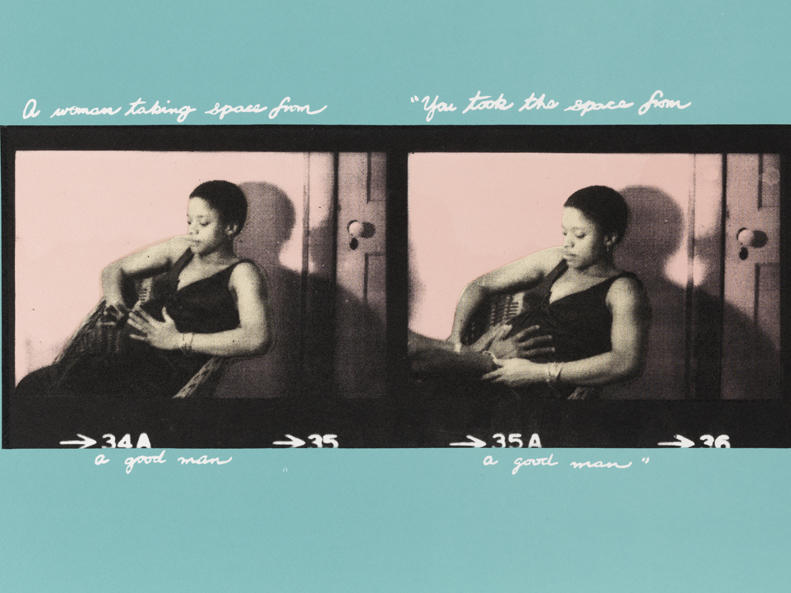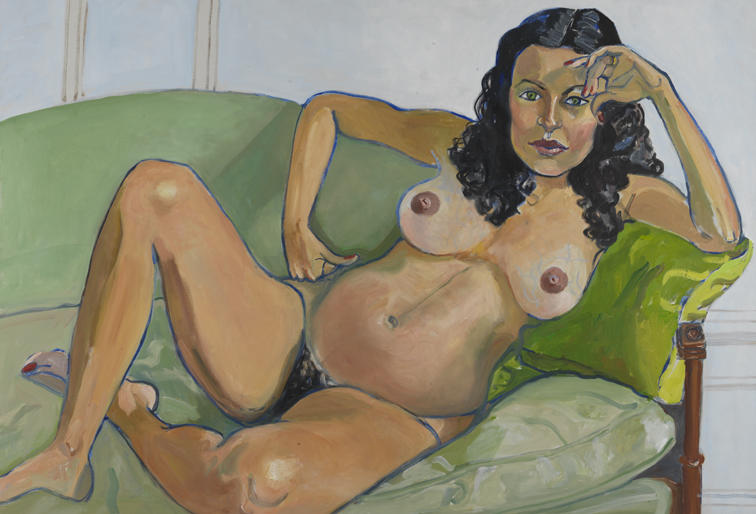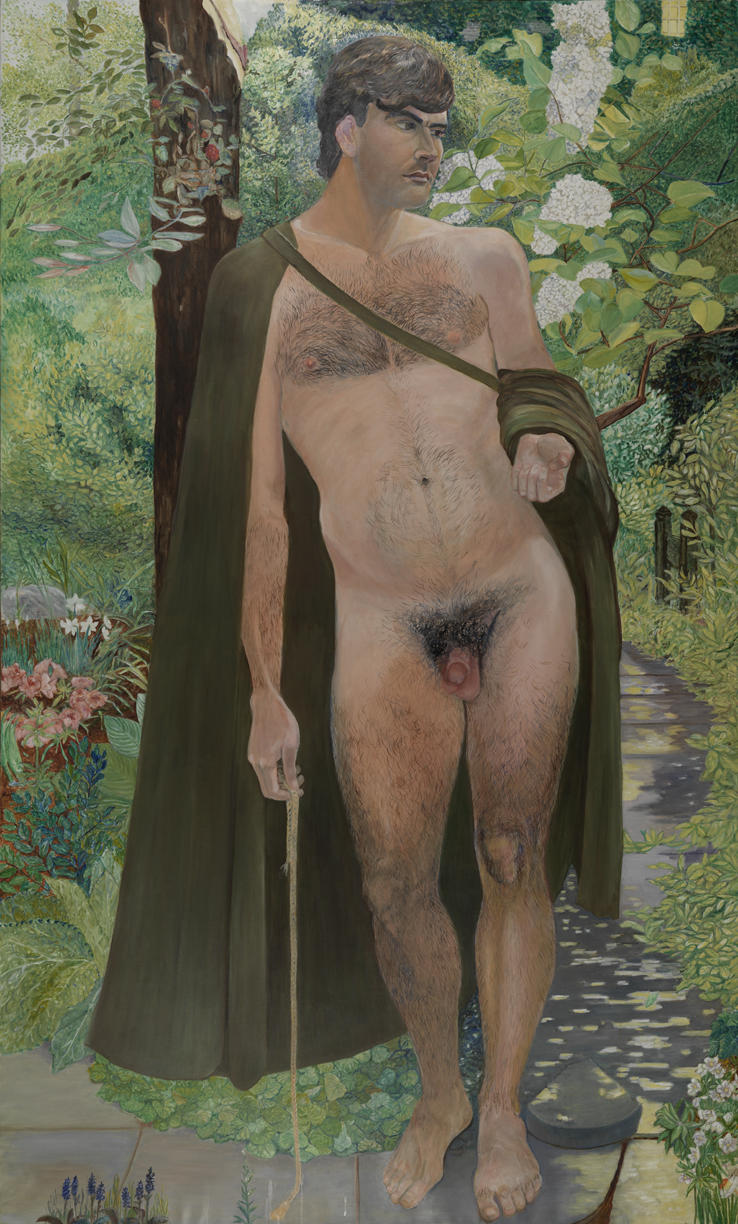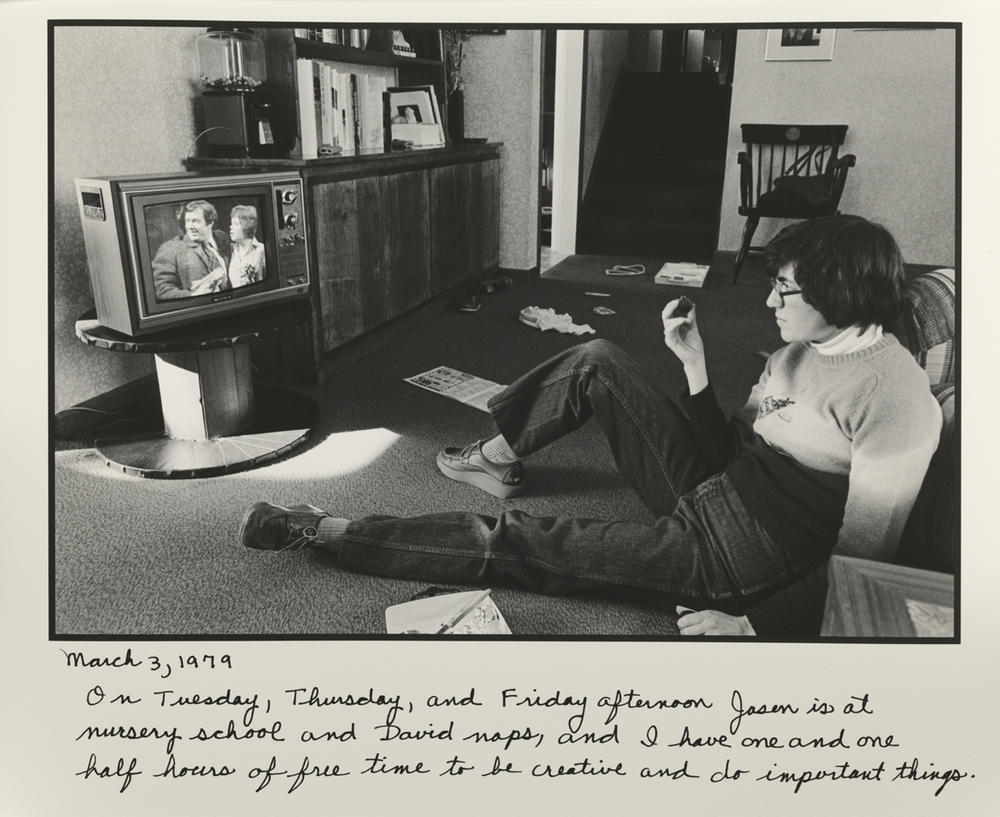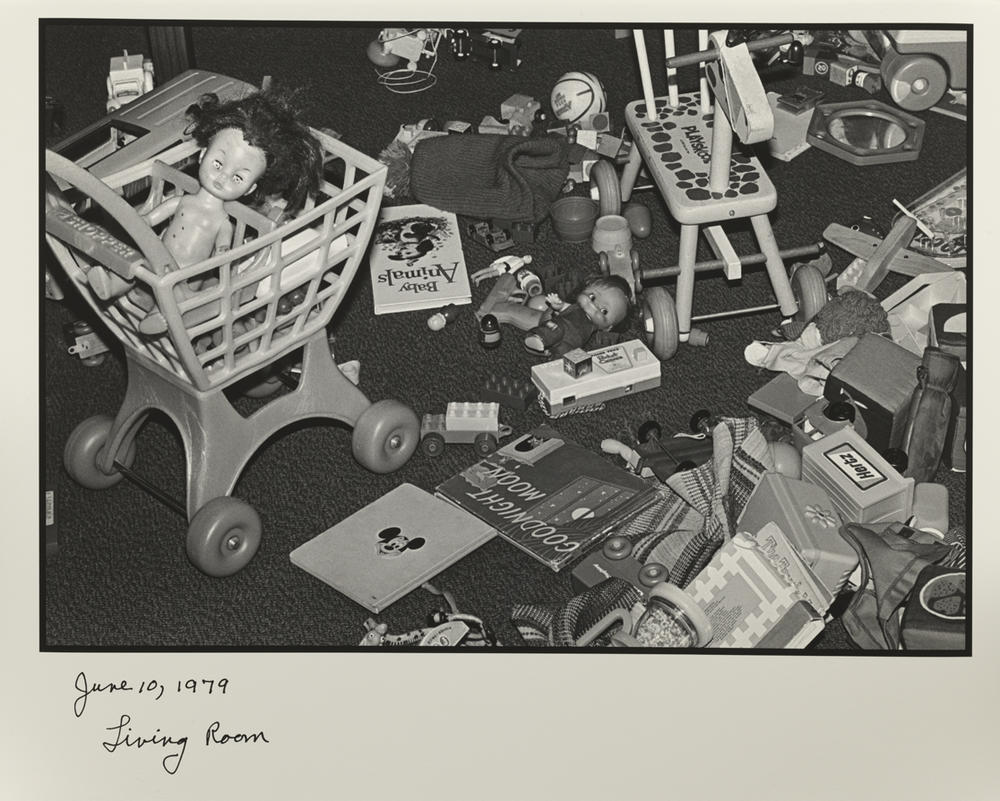Section Branding
Header Content
In One Art Exhibition, Women Are 'Taking Space' They've Long Deserved
Primary Content
She was 22. One of three women in a class of 24. Her professor at the Philadelphia College of Art told her she was "taking up a good man's space" in his class. All she'd do when school was over was get pregnant and raise her child. "Meanwhile," said the professor, "a good man could have been in that space."
Some lesson! It haunted her. "He wanted to stop my future," Deborah Willis says. "To shut me down as a woman and a creative person." She found better teachers, graduated, yes, got pregnant. And started taking pictures of her pregnant self. In 1976, a year after graduation, her son was born. Raising him, shooting photos, she got a MacArthur grant, a professorship, all kinds of awards, and became the "dean of Black photography in America." Her son Hank Willis Thomas discovered these old photos and said, "Oh Ma, you've got to make work about this!"
And she did. As did, and do, thousands of women all over the world who carve out time in which to create art. Until fairly recently, their art rarely made it into hallowed museums. But this seems The Time of Women. #MeToo, 19th Amendment centennials, Kamala Harris. Women running states, countries, corporations, museums.
The Director and all the curators at PAFA, the Pennsylvania Academy of the Fine Arts, are female. And the title of their current exhibition "Taking Space: Contemporary Women Artists and the Politics of Scale" was inspired by Deborah Willis' lithograph.
Motherhood is one exhibition theme, a major role of women taken seriously in fine art (makes me wonder how many men have put nude preggers in their art). Alice Neel's painting Claudia Bach Pregnant is a gorgeous stare-right-at-you display of ownership and promise.
PAFA curator Jodi Throckmorton says with these pieces by Neel and Willis "are not only taking space in the galleries they're making space in their bodies to take on the incredibly powerful work of making human beings."
I'm a huge fan of Alice Neel's. (A big retrospective of her work opens March 22 at the Metropolitan Museum of Art.) Neel was fearless. When she was 80 she made this astonishing self-portrait (please do click on the link – you won't be sorry.) It's not in the PAFA show, which only includes works from their permanent collection, but I had to mention it. See what I mean by fearless!?
"Taking Space" shows sculptures, posters, ceramics. But it's women making art of women that captures my eye. Especially how we show ourselves on canvas. Occupying space. Unapologetically.
Janie is a portrait of a body-positivity activist the curators say. "These are not bodies seen in museums," observes Throckmorton (her co-curator is Brittany Webb). Or magazines or advertisements. They're "bodies that don't meet the horrific ideal that mass media put on women."
Sylvia Sleigh's Pluto: Robert Lucy is a riff on the ideal mass media and museum body. But Sleigh flips the usual "male gaze" (at women). Hers is the female gaze taking on a pretty hunky guy.
Throckmorton observes that "there is a reaction to seeing a penis in the gallery, versus female breasts. Male and female visitors are less comfortable." Well, Michelangelo's statue of David is pretty out there, and rarely makes grown men blush. Could it be because a woman held the brush that painted Pluto?
All this talk about bodies and pregnancy brings us to Judy Gelles. And her children. Children were favorite subjects in the photos, films and videos she made. In this trio, she clicks moments of real life that any mother will recognize.
Scenes like this are often the specialties of female artists. Not always by choice. Curator Webb says "for a long time they were told to paint like men, and that domestic scenes were not appropriate." But women defied that, especially post-feminists, and made art of the daily experiences of women's lives. (By 1979 my son was 9, and our living room was tidied up better than Gelles.' I also thanked heavens I didn't have to read Goodnight Moon aloud anymore. I know. You love(d) it!)
Finally, from the 62 objects in "Taking Space," Elizabeth Colomba is putting different faces in old-fashioned trappings. She says her watercolor Riding Places is "taking what has been historical space, and making room for representation of black actors."
"I want to create a different narrative," Colomba says. Her rider could have stepped out of an episode of Bridgerton. The fancy house, the elaborate gate, the stylish clothes. "Black characters leisurely taking their own space." If the rider were white, Black men likely would be shown as servants — bringing out the horse, holding reins for the mistress. Re-casting race in paint — does it mean the same thing, Colomba wonders. Do people have the same reactions to it? "No, they don't."
The women artists' work on these museum walls raise political and social questions in sync with the times. Ongoing conversations that flourish in public, in newly welcoming surroundings.
Art Where You're At is an informal series showcasing offerings at museums closed due to COVID-19, or at museums you may not be able to visit.
Copyright 2021 NPR. To see more, visit https://www.npr.org.
